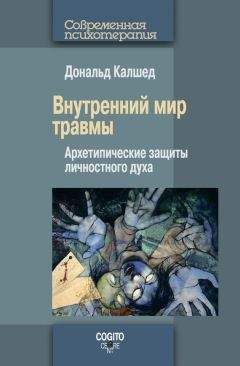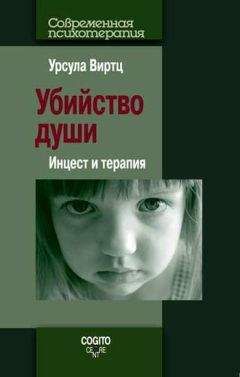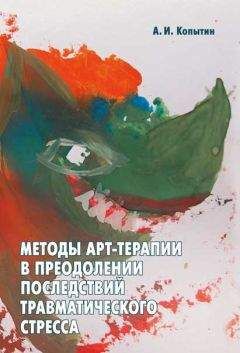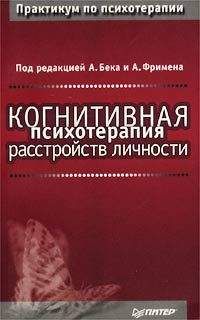Дональд Калшед - Травма и душа. Духовно-психологический подход к человеческому развитию и его прерыванию
Savitz C. (1986). Healing and Wounding: The Collision of the Sacred and the Profane in Narcissism // Journal of Analytical Psychology. 31 (4): 319–40.
Schore A. N. (1994). Affect Regulation and the Origin of the Self. Hillsdale, NJ: Lawrence Erlbaum Associates.
Schore A. N. (2003a). Affect Dysregulation and Disorders of the Self. New York: W. W. Norton.
Schore A. N. (2003b). Affect Regulation and the Repair of the Self. New York: W. W. Norton.
Schore A. N. (2009). Attachment Trauma and the Developing Right Brain: Origins of Pathological Dissociation // Dissociation and the Dissociative Disorders: DSM-V and Beyond / P. F. Dell, J. A. O’Neil (eds). New York: Routledge.
Schore A. N. (2011). The Right Brain Implicit Self Lies at the Core of Psychoanalysis // Psychoanalytic Dialogues. 21 (1): 75–100.
Schwartz-Salant N. (1989). The Borderline Personality: Vision and Healing. Wilmette, IL: Chiron. [Рус. пер.: Шварц-Салант Н. Пограничная личность: видение и исцеление. М.: Когито-Центр, 2009.]
Searles H. F. (1960). The Nonhuman Environment. New York: International Universities Press.
Sedgwick D. (2008). Winnicott’s Dream: Some Reflections on D. W. Winnicott and C. G. Jung // Journal of Analytical Psychology. 53 (4): 543–60.
Shapiro F. (2001). Eye Movement Desensitization and Reprocessing: Basic Principles, Protocols and Procedures, 2nd edn. New York: Guilford Press.
Shengold L. (1989). Soul Murder: The Effects of Childhood Abuse and Deprivation. New York: Fawcett Columbine.
Shroder T. (1999). Old Souls. New York: Simon and Schuster.
Siegel D. (2007). The Mindful Brain: Reflection and. Attunement in the Cultivation of Well-being. New York: W. W. Norton.
Sinason M. D. A, Cone-Farran A. M. (2007). The New, the Now and the Nowhere in Kalsched’s Archetypal Self-care System // Who Owns Jung? / A. Casement (ed.). London: Karnac.
Singer T., Kimbles S. L. (2004). The Cultural Complex: Contemporary Jungian Perspectives on Psyche and Society. Hove: Brunner-Routledge.
Slochower J. (2011). Analytic Idealizations and the Disavowed: Winnicott, His Patients and Us // Psychoanalytic Dialogues. 21: 3–21.
Solomon A. (2001). The Noonday Demon: An Atlas of Depression. New York: Scribner. [Рус. пер.: Соломон Э. Демон полуденный: Анатомия депрессии. М.: Добрая книга, 2004.]
Solomon A. (2010). The Soul in Depression, Interview with Krista Tippett // Einstein’s God / K. Tippet. New York: Penguin Books, pp. 227–249.
Speerstra K. (ed.). (2005). Divine Sparks: Collected Wisdom of the Heart. Sandpoint, ID: Morning Light Press.
Stanley S. (2010). Facing the Trauma: How the Face Reveals and Processes Unexperienced Suffering // The USA Body Psychotherapy Journal. 9 (2): 5–15.
Stein M. (ed.). (2010). Jungian Psychoanalysis: Working in the Spirit of C. G. Jung. Chicago, IL: Open Court Press.
Steiner J. (1993). Psychic Retreats: Pathological Organizations in Psychotic, Neurotic and Borderline Patients. London: Routledge.
Stern D. (1985). The Interpersonal World of the Infant. New York: Basic Books.
Stern D. (1997). Unformulated Experience: From Dissociation to Imagination in Psycho analysis. Hillsdale, NJ: The Analytic Press.
Stern D. (2004). The Present Moment in Psychotherapy and Everyday Life. New York: W. W. Norton.
Stromsted T. (2001). Re-inhabiting the Female Body: Authentic Movement as a Gateway to Transformation // The Arts in Psycho therapy. 28 (1): 39–55.
Sullivan B. S. (2010). The Mystery of Analytical Work: Weavings from Jung and Bion. London: Routledge.
Sulloway F. J. (1979). Freud, Biologist of the Mind: Beyond the Psychoanalytic Legend. New York: Basic Books.
Symington N. (1993). Narcissism: A New Theory. London: Karnac.
Symington N. (1994). Emotion and Spirit: Questioning the Claims of Psychoanalysis and Religion. London: Karnac.
Symington N. (2001). The Spirit of Sanity. London: Karnac.
Symington N. (2002). A Pattern of Madness. London: Karnac.
Tagore R. (1913). On the Seashore // The Crescent Moon: Child Poems. New York: Macmillan.
Tarrant J. (1998). The Light Inside the Dark. New York: Harper Collins.
Taylor C., Finley P. (1997). Images of the Journey in Dante’s Divine Comedy. New Haven, CT: Yale University Press.
Taylor E. (1984). William James on Exceptional Mental States: The 1896 Lowell Lectures. Amherst, MA: University of Massachusetts Press.
The Compute Grimm’s Fairy Tales (1972). New York: Random House.
The Holy Bible (1956). Authorized Kingjames Version. New York: Hawthorn Books.
Tippet K. (2010). Einstein’s God. New York: Penguin Books.
Tolle E. (1999). The Power of Now. Novato, CA: New World Library. [Рус. пер.: Толле Э. Сила момента сейчас: Руководство по духовному просветлению. Пер. Н. Лаврентьева. URL: http://mir45.narod.ru/power1.htm (дата обращения: 15.04.2015).]
Tripp E. (1970). Classical Mythology. New York: Meridian Books.
Tronick E. Z. (1989). Emotions and Emotional Communication in Infants // American Psychologist. 4 4: 112–119.
Trousdell R. (2011). Surviving Trauma, Becoming Human: Victim and Hero Roles in the Oresteia of Aeschylus // Ancient Greece, Modem Psyche: Archetypes in the Making / V. B. Rutter, T. Singer (eds). New Orleans, LA: Spring Journal Books.
Tustin F. (1990). The Protective Shell in Children and Adults. London: Karnac Books.
Underhill E. (1955). Mysticism: A Study in the Nature and Development of Man’s Spiritual Consciousness. New York: The Noonday Press.
van der Kolk B. A. (1996). The Body Keeps the Score: Approaches to the Psychobiology of Posttraumatic Stress Disorder // Traumatic Stress: The Effects of Overwhelming Experience on Mind, Body and Society / B. A. van der Kolk, A. C. McFarlane, L. Weisaeth (eds). New York: Guilford Press, pp. 214–241.
van Loben Sels R. (2003). A Dream in the World: Poetics of Soul in Two Women, Modern and Medieval. Hove – New York: Brunner-Routledge.
von Franz M. L. (1970). A Psychological Interpretation of the Golden Ass of Apuleius. New York: Spring Publications.
von Franz M. L. (1991). Dreams. Boston, MA: Shambhala.
von Franz M. L. (2000). The Problem of the Puer Aeternus, Toronto: Inner City Books. [Рус. пер.: фон Франц М. Л. Вечный юноша. М.: Класс, 2006.]
Wallin D. (2007). Attachment in Psychotherapy. New York: Guilford Press.
Watts A. (1954). Myth and Ritual in Christianity. London: Thames & Hudson.
Weil S. (1987). Gravity and Grace. London: Ark Paperbacks.
Wilber K. (1998). The Eye of Spirit. Boston, MA – London: Shambhala.
Wilkinson M. (2006). Coming Into Mind. London: Routledge.
Wink W. (1984). Naming the Powers. Philadelphia, PA: Fortress Press.
Wink W. (1998). The Powers That Be: Theology for a New Millennium. New York: Doubleday.
Winnicott D. W. (1949). Mind and its Relation to the Psyche – Soma // Through Paediatrics to Psycho-Analysis. New York: Basic Books, pp. 243–254.
Winnicott D. W. (1960a [1965]). Ego Distortion in Terms of True and False Self // The Maturational Processes and the Facilitating Environment. New York: International Universities Press, pp. 140– 1 5 7.
Winnicott D. W. (1960b [1965]). Countertransference // The Maturational Processes and the Facilitating Environment. New York: International Universities Press, pp. 158–165.
Winnicott D. W. (1961). The Theory of the Parent – Infant Relationship // International Journal of Psychoanalysis, 41: 585–595.
Winnicott D. W. (1962 [1965]). Ego Integration in Child Development // Maturational Processes and the Facilitating Environment. New York: International Universities Press, pp. 56–63.
Winnicott D. W. (1963a [1965]). Communicating and Not Communicating Leading to a Study of Certain Opposites // The Maturational Processes and the Facilitating Environment. New York: International Universities Press, pp. 179–192.
Winnicott D. W. (1963b [1965]). The Development of the Capacity for Concern // The Maturational Processes and the Facilitating Environment. New York: International Universities Press, pp. 73–82.
Winnicott D. W. (1963c [1965]). Dependence in Infant-Care, in Child-Care, and in the Psychoanalytic Setting // The Maturational Processes and the Facilitating Environment. New York: International Universities Press, pp. 249–259.
Winnicott D. W. (1963d [1965]). The Mentally Ill in Your Caseload // The Maturational Processes and the Facilitating Environment. New York: International Universities Press, pp. 217–229.
Winnicott D. W. (1964a [1989]). Psycho-Somatic Illness in Its Positive and Negative Aspects // Psychoanalytic Explorations / C. Winnicott, R. Shepherd, M. Davis (eds). Cambridge, MA.: Harvard University Press, pp. 103–114.
Winnicott D. W. (1964b [1989]). Review of Memories, Dreams, Reflections // Psychoanalytic Explorations / C. Winnicott, R. Shepherd, M. Davis (eds). Cambridge, MA: Harvard University Press, pp. 482–492.
Winnicott D. W. (1969a [1989]). The Use of an Object and Relating Through Identifications // Psychoanalytic Explorations / C. Winnicott, R. Shepherd, M. Davis (eds). Cambridge, MA: Harvard University Press, pp. 218–227. [Рус. пер.: Винникотт Д. В. Использование объекта // Антология современного психоанализа. Т. 1. М.: Ин-т психологии РАН, 2000. С. 447–454.]
Winnicott D. W. (1969b [1989]). Physiotherapy and Human Relations // Psychoanalytic Explorations / C. Winnicott, R. Shepherd, M. Davis (eds). Cambridge, MA: Harvard University Press, pp. 561–565.
Winnicott D. W. (1970 [1989]). On the Basis for Self in Body // Psychoanalytic Explorations / C. Winnicott, R. Shepherd, M. Davis (eds). Cambridge, MA: Harvard University Press, pp. 261–283.
Winnicott D. W. (1971). Transitional Objects and Transitional Phenomena // Playing and Reality. New York: Basic Books, pp. 1–26. [Рус. пер.: Винникотт Д. В. Переходные объекты и феномены // Игра и реальность. М.: Ин-т общегуманитарных исследований, 2004.]
Winnicott D. W. (1974 [1989]). Fear of Breakdown // Psychoanalytic Explorations / C. Winnicott, R. Shepherd, M. Davis (eds). Cambridge, MA: Harvard University Press, pp. 87–95.
Winnicott D. W. (1975). Primitive Emotional Development // Through Paediatrics to Psycho-Analysis. New York: Basic Books, pp. 145–156.
Woodman M. (1984). Psycho/Soma Awareness // Quadrant, 17 (2): 2 5 – 37.
Wordsworth W. (2004a). Ode: Intimations of Immortality from Recollections of Early Childhood // Selected Poems / S. Gill (ed.), New York: Penguin Books, pp. 157–163. [Рус. пер.: Вордсворт У. Отголоски бессмертия по воспоминаниям раннего детства. Пер. с англ. Г. Кружкова // Интерпоэзия. 2010. № 3.]
Wordsworth W. (2004b [1798]). Lines Composed a Few Miles Above Tintern Abbey // Selected Poems / S. Gill (ed.). New York: Penguin Books, pp. 61–66.
Примечания
1
Шекспир У. Макбет. Глава 2.2: 35–39. Пер. Б. Л. Пастернака.
2
Здесь и далее в тексте я соответствует английскому self – понятию, принятому в психоаналитической теории, например, в эго-психологии и психологии самости. Там же, где автор вводит специальные термины психологии самости Кохута (Kohut, 1971, 1977, 1984), например self-object, мы используем вариант «объект самости». – Прим. науч. ред.
3
Этот термин использовал Элленбергер (Ellenberger, 1970: 150, 314) для описания базовой функции бессознательного, то есть тенденции представать перед сознанием в виде образов, ориентированных на архаические и типические (архетипические) мотивы. По его словам, этот термин восходит к Фредерику Майерсу, Теодору Флурнуа и Карлу Густаву Юнгу. Он также указывает, что эта функция бессознательного не получила того внимания, которого заслуживает.
В этой книге в соответствии с представлениями К. Г. Юнга мы будем делать акцент на идее, что мифопоэтическая история окружает жизнь каждого индивида, как пламя окружает фитиль свечи, предоставляя матрицу для «вселения» души. Матрица – это область между мирами духовной и материальной реальности. Эта мистическая третья область известна в аналитической психологии как психическая, или имагинальная, реальность. Юнг предполагал, что мифопоэтические образы укоренены в коллективном слое бессознательного. Он пояснил, что этот глубинный слой психики опосредует переживание, воспринимаемое как духовное. Так что мы не можем избежать духовных переживаний в нашей во всем остальном материальной жизни. Мы проживаем подлинную жизнь «между мирами». Если мы здоровы, мы – «граждане двух миров».




